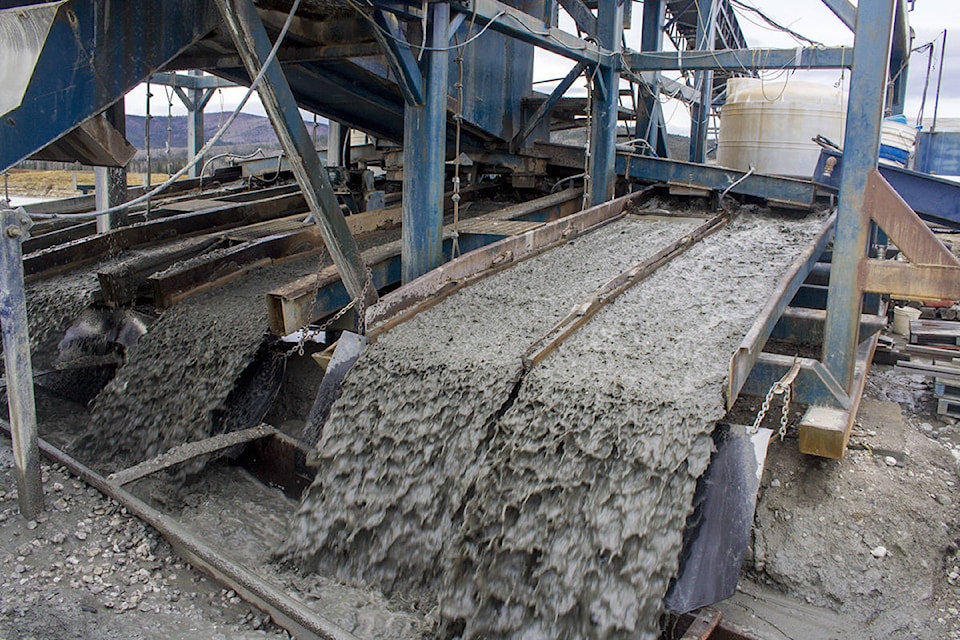The alternative method being proposed for a placer mining project at Burwash Creek is not any more efficient at extracting gold from water than sluice box methods, according to long-time placer miner and sluice box researcher Randy Clarkson.
The project, which was put forward by Northern Minerals Development Incorporated (NMD) proposes using centrifuges and water cycling tanks in place of sluice boxes.
NMD director Allan Falle previous told the News that the proposed method uses less water, is less damaging to the environment, easier to remediate and more efficient at gold extraction than current methods, which Falle said lose up to 85 per cent of gold.
“I’ve tested sluice-boxes in even the very worst, dirtiest conditions and never had anywhere near that low of a recovery,” said Clarkson.
Clarkson, who has worked on projects to improve sluice boxes, said sluice boxes, “used to be pretty bad but, in the last 30 years we’ve really improved on them.”
Modern sluice boxes recover 99.4 per cent of gold from water, Clarkson said.
In response, Falle said he agreed with Clarkson — modern sluice boxes are quite efficient — but he claims they lose any gold which is smaller than 125 microns. Falle said the technique NMD proposes will recover gold from water as fine as two microns.
Falle said “the majority” of gold in “any creek” in the Yukon was under 125 microns.
“I totally agree with the new sluice boxes. They do recover up to 85 per cent of gold that is above 125 microns,” Falle said. “I am not trying to prove to anything to anyone… what we are interested in is gold below 125 microns.”
“The fact is that gold smaller than (125 microns) you can’t recover (with a sluice box)…. It simply won’t touch the bottom of the box.”
Clarkson said he is not convinced by NMD’s recovery claims.
“Mr. Falle is kind of talking through his hat… this is much more expensive and not any more efficient,” he said.
“Because (sluice boxes) don’t have blinking lights and whirl and whiz, people assume sluice boxes don’t do as good a job (as something new)…. (NMD’s) method is almost identical to sluice boxes.”
Falle said he wasn’t out to convince anyone of anything, but that miners who doubted him should “check their dredges.”
“They’d be extremely surprised how much gold is in that but it’s gold their systems can’t catch,” Falle said.
“Hopefully, (the proposed system) will work. It’s not been tested in the Yukon but it has been used elsewhere and works like a charm.”
Falle said the proposed system will allow the mine site to be remediated “to a better standard than any other mine in the Yukon,” because it uses less water and, unlike sluice boxes, does not require a tailings pond and places silt on top of the disturbed rock instead of the other way around, allowing for faster plant regrowth.
“Give it a chance,” Falle said. “Any time you can improve the environment we think this is a good thing, and if you can improve your bottom line at the same time that’s even better.”
Clarkson said he agreed the centrifuge method would use less water, but that water in sluice boxes can also be recycled to make them more efficient and cleaner. He was also dubious about NMD’s claims about remediation, he said.
“You still have to tear all that up… there’s no difference in the methods, absolutely no difference,” he said.
“It bothers me professionally that someone would promote this kind of nonsense.”
Falle said he truly respects sluice box miners in the Yukon, who are “the best in the world,” and that he “isn’t here to argue with anyone.”
“I’m not here to criticize anyone’s mining methods,” Falle said. “I learned a long time ago not to criticize the way people make their money. That’s always a bad idea.”
The project is currently under review by the Yukon Environmental and Socio-economic Assessment Board. It is open for public comment until Sept. 5.
Contact Lori Garrison at lori.garrison@yukon-news.com
